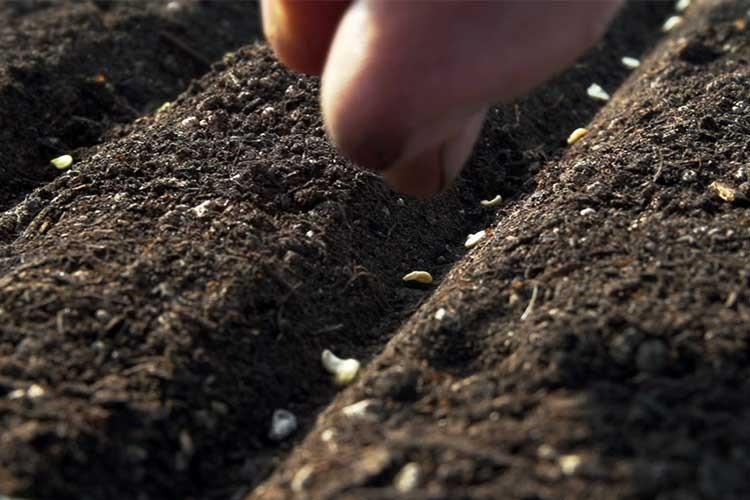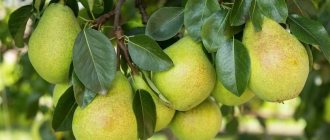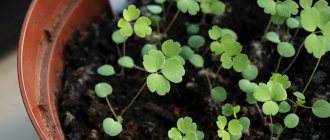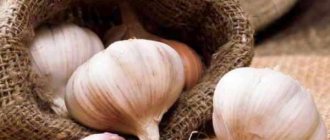Alyssum marine and lobularia marine
Podzimny sowing of these very similar (both externally and in care), but still different colors allows you to get strong hardened seedlings, adapted to open field conditions.
A sowing bed is chosen with loose soil, with an acidity close to neutral. The seeds of alyssum (Alyssum maritimum) and lobularia (Lobularia maritima) are very small, so they can be sown in a mixture with river sand. Seeds are sown in frozen ground, it is advisable to mulch the crops.
Aster annual, or Chinese Callistephus
When sowing asters (Callistephus chinensis) in winter, the risk of fungal diseases, which seriously damage these flowers, decreases. And the plants themselves bloom much earlier than when sown in spring.
For winter sowing of asters, it is very important to choose the right place. Plants need a sunny area with loose soil and neutral acidity to grow and bloom. It is advisable to choose marigolds or calendula as predecessors. You can not plant asters after the asters themselves, tulips, gladioli.
It is advisable to prepare the bed raised, 15-20 cm high, water will not stagnate on it, and in spring it will warm up quickly enough.
In no case should fresh manure be applied to the garden bed for sowing asters. After preparing the grooves for sowing, they must be shed with the preparations "Maxim", "Fitosporin" to prevent the spread of fungal diseases.
Aster seeds remain viable for no more than three years, and the closer the expiration date of the seeds is, the worse they germinate, therefore, before winter, aster seeds need to be sown quite often, on the basis that not all of them will germinate. Seeds are sown to a depth of 2 cm, covered with prepared dry soil on top. You can additionally mulch the bed with sawdust or peat.
Marigold
There are conflicting opinions on the possibility of sowing marigolds (Tagetes) before winter. The thing is that marigold seeds need warmth for germination. And with a lack of heat and excess moisture, the seeds can simply rot. Therefore, it is better to sow heat-loving marigolds before winter in regions with not very cold winters and early spring.
In cold climates, this is risky. Experienced gardeners are advised to try sowing marigolds before winter, not in open ground, but in a greenhouse. Be sure to cover such crops with a layer of peat for the winter.
Godezia
An elegant flower for flower beds, borders. Godetia is also very good in pots and containers. Planting godetia seeds before winter allows you to achieve an earlier and more abundant flowering. Similar to sowing marigolds, godetia seeds are recommended to be sown in regions with fairly warm winters. But many growers from colder regions successfully grow godetia and sow before winter.
It is advisable to sow seeds immediately to a permanent place. The plant prefers a sunny location and fertile soil. Crops should be mulched to protect them from frost and excess moisture.
Calendula, or Marigold
Even for inexperienced growers, sowing and growing calendula (Calendula) does not cause any difficulties. The plant is distinguished by its unpretentiousness. Calendula is a cold-resistant crop, it rises without problems in the spring after sowing before winter.
You can sow calendula seeds in almost any soil.Sowing can be done on a seedbed or immediately to a permanent place - the plant easily tolerates a transplant. If you plan to grow calendula in containers, then you can sow seeds directly into them, making sure to make drainage there.
Kosmeya, or Space
Cosmos are very beautiful and at the same time unpretentious flowers, for which they are loved by many summer residents. Sowing cosmos seeds before winter will not cause any problems. She herself often reproduces by self-seeding. In this case, in the spring, excess seedlings can be removed.
For sowing cosmos, sunny areas with well-drained loose soil are ideal. If the soil is too nutritious, the plant will begin to build up green mass to the detriment of flowering, so do not overuse fertilization. As a rule, kosmeya is sown immediately to a permanent place.
Lavatera
Lavatera, popularly also called the wild rose, is another unpretentious beautiful flower. Ideal for low maintenance flower gardens, it is suitable for growing in containers, flower beds and borders.
The plant is very unpretentious, but it still develops better in well-lit areas with light, loose soil. The plant is absolutely undemanding to mineral nutrition; fertilization for planting is necessary only on very poor and depleted soil.
Seeds of lavater before winter, as a rule, are sown immediately to a permanent place. It is advisable to mulch crops for the winter.
Phlox Drummond
Seeds of annual phlox (Phlox Drummondii) are frost-resistant, so the plant can be successfully sown before winter. However, it should be borne in mind that with prolonged thaws, seeds may germinate ahead of time, and seedlings may die from recurrent frosts. Therefore, it is necessary to provide a shelter for crops with phlox.
Soil preparation
So, knowing whether it is possible to plant an aster plant before winter, the first step is to choose and prepare a place for sowing. To protect the aster from an unpleasant and frequent disease - fusarium wilting - warm up the soil. Fusarium fungus spores will die if a fire is made in the place of the future flower bed, which will warm the earth well. Distribute the remaining ash here. The main conditions for the soil where you can grow a winter plant:
- A well-lit place or garden bed, where partial shade prevails, is the best area where flowers should be sown.
- The bed should not be flooded in the spring.
- Good predecessors are calendula and fragrant marigolds. You cannot plant in the same flower bed where carnations, any tulips and asters themselves bloomed last season.
- The land in the selected area should not be sour, not heavy. The best option is to plant asters in drained alkaline soil.
- Fertilizers: humus, potassium sulfate, azofoska and potassium superphosphate.
- Dig in advance the area where the seed should be planted as deep as possible. Loosen the garden bed.
- Make shallow grooves in the selected area - 2 cm.
- Leave the bed covered with covering material until the onset of cold weather.
- At the same time, prepare a dry soil mixture or peat, with which you will later cover the sown in the winter.
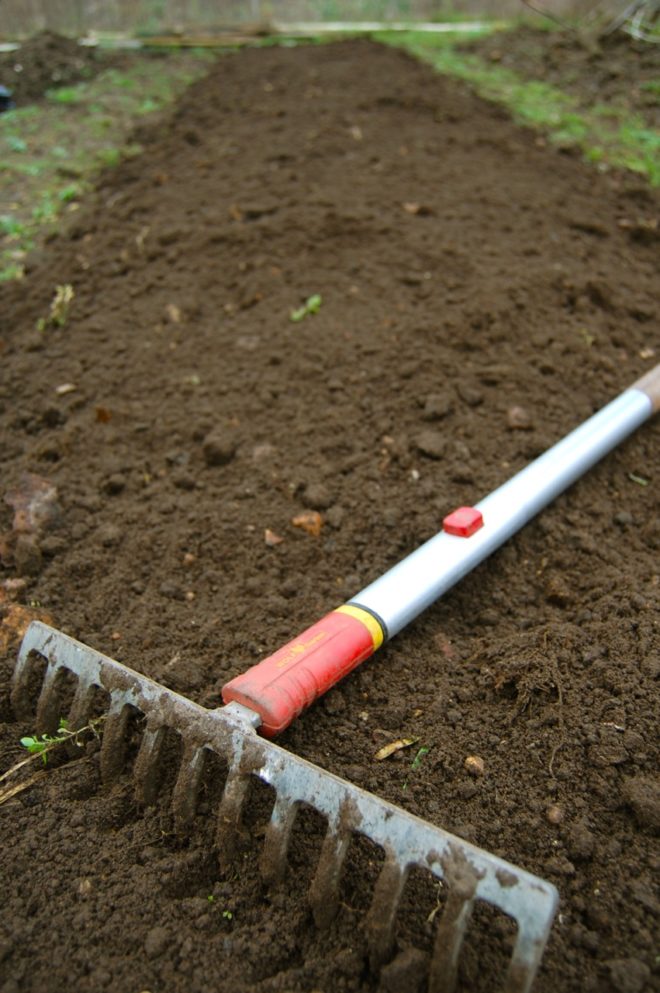
Preparing the soil before planting asters in the winter
Cooking the garden
In October, before sowing seeds, the soil in the garden bed or flower bed is dug up with the addition of fertilizers. Introduce 3 kg of humus and peat, 1 tablespoon of superphosphate, potassium sulfate and urea. You can also add river sand and 300 g of ash. The dosage is given for 1 square meter of soil. The soil is dug up to 25-30 cm with fertilization, leveled with a rake and grooves are made 2 cm deep. After that, the soil is covered with lutrasil and left until November, before the first frosts.
Read also: Aquarius with the moon in Capricorn
After the frost touches the ground, the lutrasil is removed. Dry aster seeds are lowered into the frozen grooves, and then sprinkled with soil by 2 cm.
Seeds
Is it possible to plant aster seeds before winter? Asters can be planted in the winter only by the seed planting method. The seeds of flowers that are planned to be planted before winter do not have to be fresh. If after the spring planting there are seeds with an expiring shelf life, then planting them now is the time. Indeed, before spring, the seed will have time to deteriorate in the heat. A good breeding option for a plant such as an aster would be to grow the seeds of an Alpine mixture of asters - bright and variegated undersized plants.
Landing
When the frosts hit, it's time to get down to business. The best time to plant these flowers is November or early December. Experienced gardeners recommend focusing both on weather conditions - stable cold weather, and on the data of the lunar sowing calendar.
- Remove the covering material from the intended bed.
- It is necessary to plant the prepared seeds in the grooves as often as possible - only the strongest seed will rise in the spring.
- Cover the sown grooves with pre-prepared dry soil 2–3 cm high.
- It remains to cover the planted with mulch - sawdust, foliage, dry spruce wood by 4-5 cm. Mulching will protect the seed from the winds and cold in frosty winter.
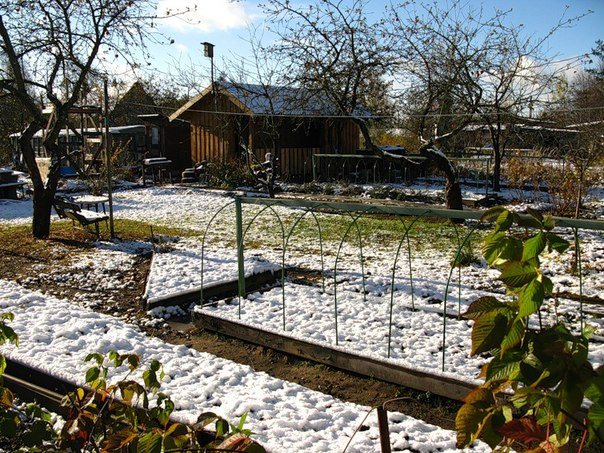

Snow and a good layer of mulch will keep the seeds from the winter cold
This ends the sowing work. Do not water the garden in winter - this can harm the plants.
How to sow aster?
Now you can start planting:
- draw shallow grooves directly on top of the ash with a wooden stick or branch (you do not need to mix the ash with the soil);
- put seeds in prepared beds, not very thickly;
- cover with earth.
If sowing is not carried out in frozen soil, it will be better to fill the grooves with a purchased loose substrate. When using ordinary soil, a crust forms in the beds, through which the seedlings may not break through.
Sowing under winter will allow you to get stronger plants that are resistant not only to diseases, but also to weather conditions. In addition, flowering occurs earlier in such crops.
Spring seedlings care
In early or mid-April, when the snow has melted, open the mulch bed - this way the sprouts will quickly break through to the light. But keep monitoring the air temperature in the spring to cover the seedlings again during the spring frost.
- Friendly, frequent shoots must be thinned out with an interval between shoots of 20-30 cm. This will allow the plant to be large, lush.
- If spring shoots are rare, plant a few seeds in the flower bed, which will also sprout soon.
- In a hot, dry spring, water the seedlings abundantly - these flowers are afraid of drought.
- Feed the flowers in spring with phosphorus-potassium fertilizers.
Method advantages
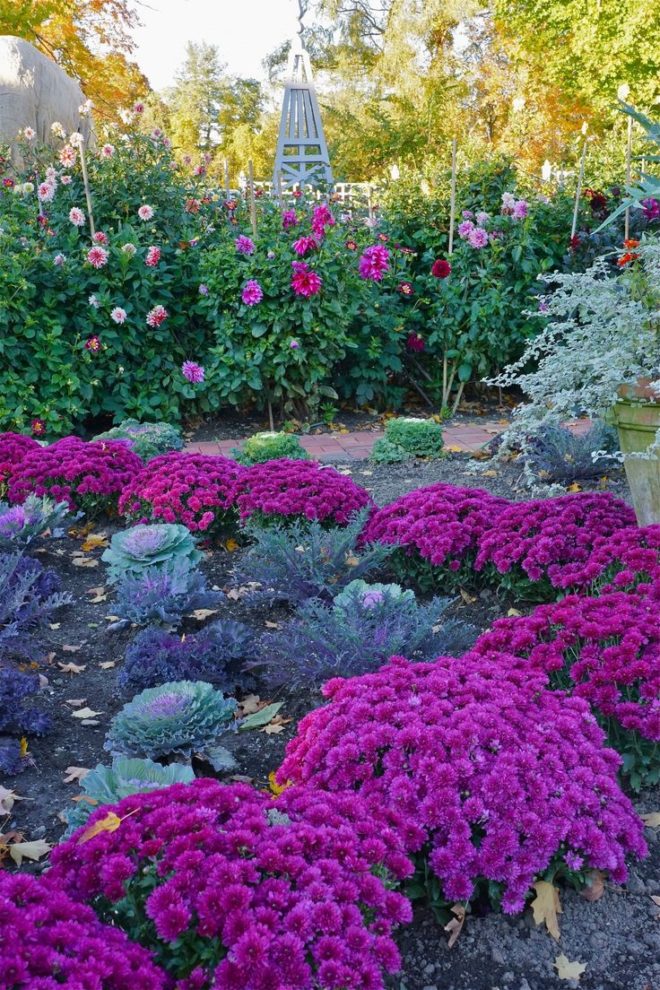

Asters planted before winter will bloom in summer
The main advantage of the podwinny aster is its resistance to diseases and pests. Plants that survived the winter are the most hardened, resistant to weather disasters, having powerful and deep roots. Another advantage is that there is no need to plant and grow flower seedlings on the windowsill by spring.
If the plants managed to overwinter in the open field, then their future seeds will receive even better germination and resistance to heat and cold. Asters planted in the winter, as it turned out, do not need special care. Bright flowers blooming in the summer are a variant of the colorful landscape of the infield or beautiful bouquets and flower arrangements.
Biennial and perennial flowers that can be sown before winter
Aquilegia
Aquilegia is a charming plant with delicate foliage. It is widely used for decorating flower beds, borders of ridges, mixborders. It is very popular because of its unpretentiousness.
Seeds of aquilegia must necessarily undergo stratification in cold conditions, therefore autumn sowing is preferable.Aquilegia does not like transplanting, it is better to sow it immediately to a permanent place. The plant prefers partial shade and loose, humus-rich soils. When sowing, the seeds do not need to be deeply buried in the ground, it is enough to sprinkle them a little. The crop bed must be covered with mulch.
Alpine aster
Growing alpine aster (Aster alpinus) from seeds is not difficult. It can be sown before winter or in spring in May. Autumn sowing is preferable, after stratification under natural conditions, the seeds germinate much better. Aster seeds are small enough, it is better to sow them in boxes or containers, and then dig into the ground. But you can immediately go to a permanent place.
To grow asters, you need to choose sunny places or partial shade. The bed must be in a slightly elevated place. The plant does not grow well in damp or humid places. The crops are sprinkled with a thin layer of humus. It is better to mulch them for the winter.
Badan
The process of growing bergenia (Bergenia) from seeds is not easy. Seeds need cold stratification for germination, and in spring they need to be at a certain temperature. Seeds and seedlings are very small, besides, seedlings develop rather slowly. For this reason, when sowing badan seeds, it is important to adhere to a certain technology:
- seeds before sowing must be treated with a fungicide for the prevention of diseases, for example, "Fitosporin";
- The seed box will need to be kept outdoors, under the snow. Thus, seed stratification will take place.
sow seeds in boxes with loose soil to a depth of no more than 0.5 cm;
In the spring, at the beginning of March, the boxes need to be brought into a room where the seeds will germinate at a temperature of 18-19 ° C for about a month. Crops should be kept in a bright place, but not in direct sunlight.
As shoots appear, you need to monitor the moisture content of the soil. The soil should not be dry or excessively wet. Seedlings develop very slowly, they can be cut into pots when they reach a height of 10-12 cm. Plants will bloom for 3-4 years.
Gypsophila
Gypsophila (Gypsophila) tolerates transplanting very badly, it must be sown immediately to a permanent place. In one place, gypsophila can grow for a very long time, so it is important to immediately choose the right one for them. Plants grow strongly over the years, therefore, the gypsophila is located quite freely - 2-3 plants per square meter.
For sowing, you need to pick up an open, sunny place, preferably with loose sandy loam soil. If the soil is dense, be sure to add small pebbles and sand to it. The site must be dry enough, without stagnant water - gypsophila can die with strong moisture.
Heuchera
Heuchera reproduces well by seeds, but it must be borne in mind that seeds do not germinate for so long. Heuchera seeds and shoots are very small, so sowing and caring for seedlings can be quite troublesome. It is more convenient to sow Heuchera in boxes with loose, well-drained soil. The soil should not be acidic. The seeds do not need to be buried, it is enough to press them down a little.
Gentian
An interesting plant for rocky hills, rock gardens. Gentians (Gentiana) are not yet very common in flower beds, possibly due to the fact that they are not easy to grow from seeds. To get gentian seedlings, you need to know that it needs long-term stratification in cold conditions. Under conditions of exposure to temperature extremes, soil moisture in the seeds, processes occur that promote their germination.
It is better to sow gentian in boxes or pots with loose soil. Sprinkle the seeds with a layer of soil and bury the containers in the ground in a shady place. In the spring you need to make sure that the soil in them does not dry out.
Gentian sown in autumn, as a rule, germinate in May - June. It also happens that the seeds that did not sprout in the spring sprout the next year. Therefore, do not rush to throw the earth out of the boxes. The boxes should be kept in partial shade and the soil should be kept moist.And in winter, leave them on the street again.
Delphinium
Growing a Delphinium from seeds is not easy. When sowing, be sure to consider the following:
- the delphinium needs cold stratification, therefore, it is preferable to sow it before winter;
- only fresh delphinium seeds germinate well. If planting is postponed until spring, then the seeds must be stored in the refrigerator;
- they can only be sown in light, loose soil. In heavy clay soil, they usually do not emerge.
Delphiniums do not tolerate transplanting well, so it is advisable to sow them immediately to a permanent place. For sowing, you need to choose a sunny, wind-protected flower bed. Seeds are not sown deeply, by 2-3 mm, crops for the winter need to be covered with mulch.
Carpathian bell
Usually the Carpathian bell (Campanula carpatica) is sown just before winter. A well-lit place is selected for sowing. The soil is preferable well-drained with an acidity close to neutral.
Soil preparation is standard, it consists in digging and fertilizing. Humus and sand are introduced into heavy soil. If the acidity is high - lime, dolomite flour or ash.
Lavender
Lavender (Lavandula) is a very attractive plant, but quite whimsical when grown from seed. If you are having trouble getting her seedlings to germinate, try sowing lavender before winter. The thing is that she definitely needs to go through the stage of cold stratification. If sowing in the spring, you will have to place the seed bowls in the refrigerator.
For sowing lavender in open ground, you need to choose a sunny, wind-protected place, always dry, without stagnant water. The soil for growing lavender should be loose and fertile. The plant does not grow well on acidic soils, therefore, with increased acidity, lime or wood ash must be added in advance.
When planting, the seeds do not need to be buried too deeply into the soil, by about 3-4 mm. You can sprinkle the grooves with seeds with river sand. After sowing, the garden bed must be mulched for the winter, and with the onset of stable frosts, more snow must be thrown over the bed.


